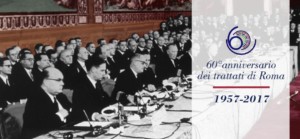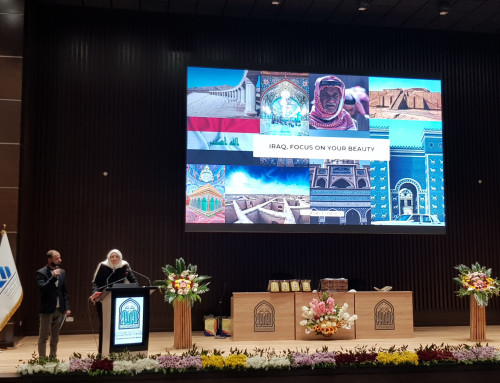Easy Diplomacy together with the Diplomatic World to better focus on core objectives
7th March 2017: Rome is once again at the centre of Europe, on the occasion of a highly significant and historic commemorative event that will bring Heads of State and Government and their delegations from 27 European countries to the Italian capital city on March 25th. On 25th of March 1957, in fact, two Treaties were signed in Rome: the first one established the European Economic Community (EEC), while the second one established the European Atomic Energy Community (Euratom). The signatory States were Belgium, Germany, France, Italy, Luxembourg and the Netherlands. The ceremony took place at the Capitol of Rome, in the Hall of the Horatii and Curiatii. The Head of Government Antonio Segni and the Minister of Foreign Affairs Gaetano Martino signed for the Italian nation. After the ratification by the national law of the signatory countries, the two Treaties came into force on 1st January 1958.
The celebration has now worldwide significance, and indeed on the eve of the event, March 24th, the Supreme Pontiff, Head of the Catholic world, is meeting the Heads of State and Government of the European Union that are going to be in Rome.
Article 2 of the founding Treaty of the EEC specified the following objectives: “The Community shall have as its task, by establishing a common market and progressively approximating the economic policies of member states, to promote throughout the community a harmonious development of economic activities, a continuous and balanced expansion, an increase in stability, an accelerated raising of the standard of living and closer relations between the states belonging to it”.
The EURATOM Treaty established the European Atomic Energy Community. It was aimed at sharing the nuclear industry of the Member States, and it was applicable to the people or bodies (Member States, individuals, companies and private and public law institutions) that performed a part or the whole of their activities in a sector regulated by the treaty. It originally comprised 234 articles, and was then modified by the Treaty of Lisbon, signed on 13th December 2007 and entered into force on 1st December 2009.
In conclusion, a commemorative summit of worldwide significance and interest is going to be held on the riverside of the Tiber. The event comes at a moment when the British Exit and a series of serious challenges are arising. From the immigration phenomenon to the decision on wether to stay or not in the Eurozone (with € as a single currency), the debate on current issues involves discussing the structures and the basis of the European Union’s mere existence and ability to operate.
Clearly the high quality of national delegations, the relevance of the topics discussed and the significant amount of participants require a hard organizational work from Rome, to overcome the historical difficulties that the Italian capital city has typically had.
The organization work can, however, be smoother and the problems can be overcome thanks to early and specific strategic planning.
>> Find out more






